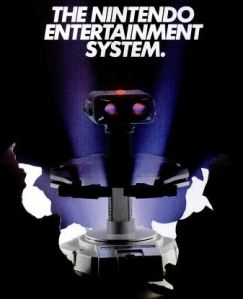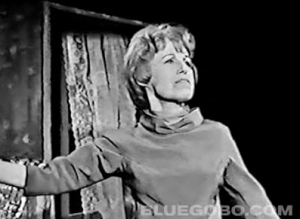Dear catnappers,
 My first semester in college, in an effort to stymie all academic progress, one of my suitemates unveiled an aging Nintendo console along with a cache of video game cartridges. Mind you, this was 1999, at which point the original Nintendo—a not-very-sexy gray box—was decidedly outdated. It was hardly unusual, for instance, to walk into the common room and find a friend hunched over, blowing into console, then the cartridge, then the console, as though giving
My first semester in college, in an effort to stymie all academic progress, one of my suitemates unveiled an aging Nintendo console along with a cache of video game cartridges. Mind you, this was 1999, at which point the original Nintendo—a not-very-sexy gray box—was decidedly outdated. It was hardly unusual, for instance, to walk into the common room and find a friend hunched over, blowing into console, then the cartridge, then the console, as though giving  mouth to mouth, just to get the damn think working again. Despite these low-tech troubles, however, I think we all felt a nostalgic thrill playing games like Castlevania and Super Mario Bros, sort of like revisiting your old elementary school (“I can’t believe how small everything is!”) Most things I remember from early childhood tend towards the traumatic—my first visit to the hospital, my first day of summer camp—but I can vividly recall the marvel I felt the first time I saw someone play Nintendo. And still I don’t quite understand how that Duck Hunt gun works.
mouth to mouth, just to get the damn think working again. Despite these low-tech troubles, however, I think we all felt a nostalgic thrill playing games like Castlevania and Super Mario Bros, sort of like revisiting your old elementary school (“I can’t believe how small everything is!”) Most things I remember from early childhood tend towards the traumatic—my first visit to the hospital, my first day of summer camp—but I can vividly recall the marvel I felt the first time I saw someone play Nintendo. And still I don’t quite understand how that Duck Hunt gun works.

The Internet, of course, was practically invented for nostalgic pleasures like these. So it’s no surprise to find a wealth of Nintendo-related material online. For starters, there’s the Nintendo Game Archive where you can view screenshots of everything from A Boy and His Blob to Zombie Nation Samurai. You can even view the game boxes, like this one from Zelda II.
Even more evocatively, you can listen to music from countless Nintendo games at the Video Game Music Archive. Just listen to the victory music from Super Mario Bros and tell me your heart doesn’t race just a little bit.
 Not all Nintendo touched turned to gold, of course. Long before the Wii, there was the power pad (Dance Aerobics anyone?) and, this ad reminds me, a robot that, as far as I remember, did nothing. (YouTube’s Irate Gamer offers a more nuanced historical view on “R.O.B.” as he was known .) My mother and father deserve credit for buying us only the most basic system.
Not all Nintendo touched turned to gold, of course. Long before the Wii, there was the power pad (Dance Aerobics anyone?) and, this ad reminds me, a robot that, as far as I remember, did nothing. (YouTube’s Irate Gamer offers a more nuanced historical view on “R.O.B.” as he was known .) My mother and father deserve credit for buying us only the most basic system.
Before Nintendo, my brother and I did manage with another game system—our beloved Atari, which was, in its own way, groundbreaking. How groundbreaking you ask? Groundbreaking enough to warrant its own magazine, now digitized over at Atari Age.  The graphics, needless to say, looked nothing like those pictured on this cover. But we were skilled in the art of imagination! And where else could you find answers to questions like these? “Dear Atari Club, I have learned that on Space Invaders if you hold down the reset button at the same time as the power switch is being turned on, your laser cannon will fire double. My question is, will this hurt either my space invaders cartridge or my Atari console unit?” (The answer: it would!) New York magazine on the other hand saw fit to ask this question, “Can Atari Stay Ahead of the Game?” (The answer: it couldn’t!)
The graphics, needless to say, looked nothing like those pictured on this cover. But we were skilled in the art of imagination! And where else could you find answers to questions like these? “Dear Atari Club, I have learned that on Space Invaders if you hold down the reset button at the same time as the power switch is being turned on, your laser cannon will fire double. My question is, will this hurt either my space invaders cartridge or my Atari console unit?” (The answer: it would!) New York magazine on the other hand saw fit to ask this question, “Can Atari Stay Ahead of the Game?” (The answer: it couldn’t!)
Alas, I have left video gaming behind, but the memories linger on. And my hand-eye coordination is better than it might otherwise be.
Yours playfully,
Stephen
P.S. Check out videos from the Nintendo-“inspired” cartoon series Captain N the Game Master.



 While
While 











 Today, I’ll head south of Massachusetts to Pennsylvania. I’ve been there only a few times in my life—once to Philadelphia, once to Pittsburgh, once to Sesame Place (I was four!), and once to Scranton for a wedding (plus the thrill of The Office connection).
Today, I’ll head south of Massachusetts to Pennsylvania. I’ve been there only a few times in my life—once to Philadelphia, once to Pittsburgh, once to Sesame Place (I was four!), and once to Scranton for a wedding (plus the thrill of The Office connection). 





